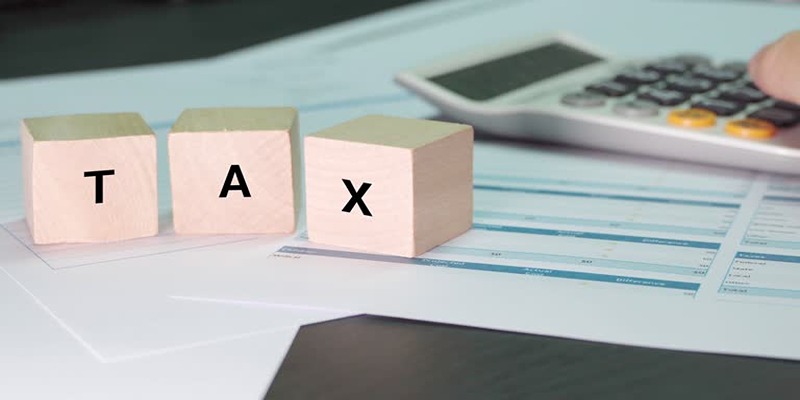Taxes can feel overwhelming, especially when navigating the stock market for the first time. From capital gains to dividends, understanding how stocks are taxed is crucial for staying compliant and optimizing your investments. The good news? It doesn’t have to be complicated. This guide simplifies the basics of stock taxes, breaking down key concepts and tax rates in clear, beginner-friendly language to help you invest smartly.
Why Do Stocks Get Taxed

At their core, stocks are financial assets. When you make money off them, that income is taxable. Stock investments are primarily taxed in two ways:
- On gains from selling stocks (known as capital gains).
- On income from dividends issued by companies.
Understanding this framework is essential to managing your investments and ensuring you’re in compliance with your tax obligations.
What Are Capital Gains
Capital gains are the profits you earn when you sell a stock for more than what you paid for it. For example:
- If you buy 10 shares of XYZ company at $50 each and later sell them for $70 each, your profit is considered a capital gain.
Capital gains are classified into two categories, based on how long you hold your stocks before selling:
- Short-term capital gains apply to stocks held for one year or less.
- Long-term capital gains apply to stocks held for more than one year.
Short-Term vs Long-Term Capital Gains Tax Rates
- Short-term capital gains are taxed as ordinary income. This means the rate aligns with your income tax bracket, which can range from 10% to 37%, depending on your earnings.
- Long-term capital gains are taxed at a lower, more favorable rate, usually 0%, 15%, or 20%, depending on your taxable income.
If you want to reduce your tax liability, consider holding onto your stocks for over a year before selling.
Are Dividends Taxed
Yes, dividends are taxable. Dividends are the payments companies make to shareholders, usually as a share of their profits. There are two types of dividends:
- Qualified Dividends: These come from U.S.-based or certain qualified foreign corporations. Taxes on these dividends are usually lower, falling under the same rates as long-term capital gains (0%, 15%, or 20%).
- Ordinary Dividends: These are taxed as regular income. The rates for ordinary dividends align with your income tax bracket.
Example of Dividend Taxation
Imagine you received $500 in dividends from your stock investments last year. If these dividends are qualified and you're in the 15% tax bracket for capital gains, you'll owe $75 in taxes for this income.
The Role of 1099 Forms in Stock Investing
Whenever you have reportable income from stocks, like gains or dividends, your brokerage firm will issue a 1099 form:
- Form 1099-B reports any gains or losses from selling stocks.
- Form 1099-DIV reports income earned from dividends.
These forms contain critical details for filing your taxes, so it’s important to keep them handy come tax season.
How Stock Losses Can Work in Your Favor
Not every investment turns a profit, and the IRS recognizes that. If you sold a stock at a loss, you may be able to use that loss to offset your taxable gains. This is called tax-loss harvesting.
For instance:
- Suppose you have $2,000 in short-term capital gains but also a $500 loss from another stock sale. You can subtract that $500 from your gains, leaving only $1,500 subject to income tax.
If your losses are greater than your gains, you can deduct up to $3,000 of the excess loss from other income, such as your salary. Any remaining losses can be carried forward to offset future taxes.
Do You Have to Pay Taxes If You Don’t Sell
One common misconception is that you owe taxes on stocks just because their value has increased. However, you only owe taxes if you sell the stock and realize a gain.
For example:
- If you bought shares for $1,000, and the value has risen to $1,500, you don’t need to worry about taxes unless you sell those shares.
That being said, you’ll still owe taxes on any dividends you receive, even if you haven’t sold your shares.
Taxes for Retirement Accounts vs Taxable Accounts
Retirement Accounts
Stocks held in tax-advantaged retirement accounts, like a 401(k) or a Roth IRA, are treated differently for tax purposes. Here’s the breakdown:
- Traditional IRA/401(k): Your investments can grow tax-deferred, and you only pay taxes when you withdraw the funds in retirement.
- Roth IRA: Investments grow tax-free. You won’t owe taxes on withdrawals if you meet certain conditions.
Taxable Brokerage Accounts
Conversely, in a standard brokerage account, any gains or dividends are taxable in the year they occur.
Tips for Stock Investors

- Track Your Cost Basis: Your cost basis is what you paid for a stock, including any fees. Accurately tracking this will help you calculate your capital gains when you sell.
- Be Strategic About Tax Timing: If you're approaching one year of holding a stock, consider waiting to hit that mark to benefit from lower long-term capital gains tax rates.
- Use a Tax Professional or Software: Taxes on stocks can get complicated, especially with frequent trades. Professional advice or robust tax software can make filing easier and error-free.
- Document Your Transactions: Keep detailed records of your buying and selling transactions, including dates, prices, and any related fees. This will be essential when it comes time to file your taxes.
Conclusion
Navigating taxes on stocks doesn’t have to be as complex as it seems. By understanding the basics of capital gains, dividends, and how tax-advantaged accounts work, you can make informed decisions about your investments and minimize your tax obligations. Whether you're just starting or already growing your portfolio, staying informed about how stocks are taxed is a smart step toward financial success.












